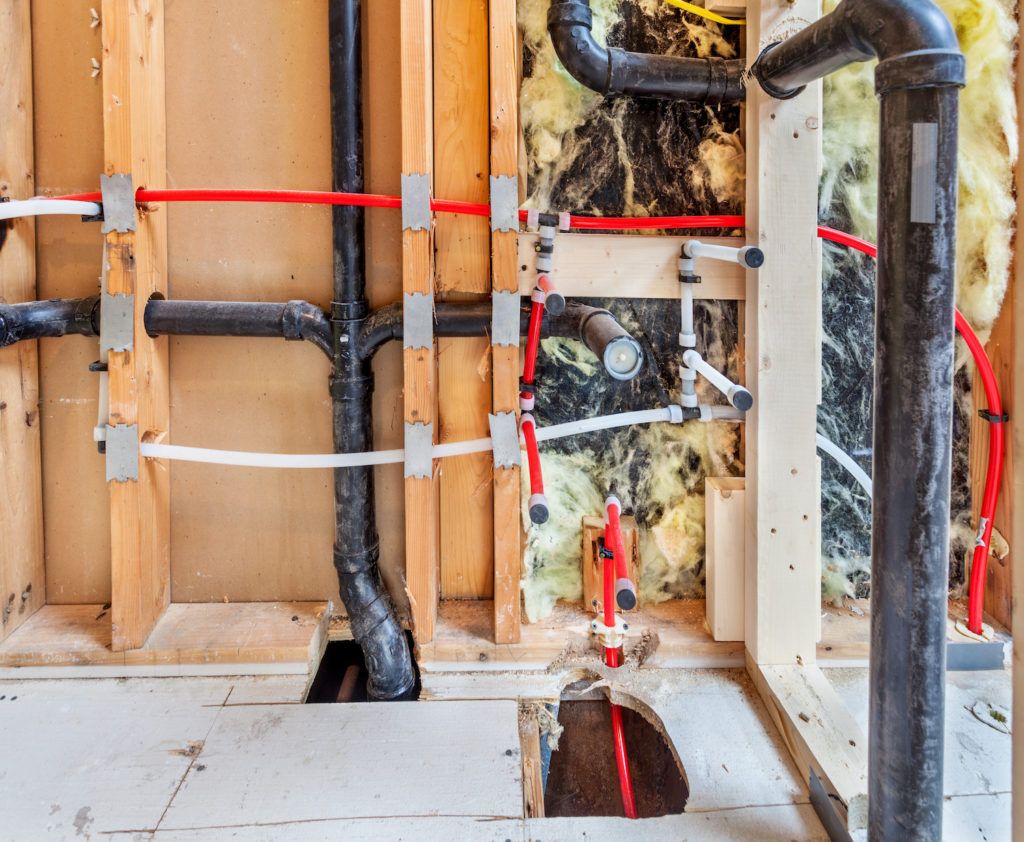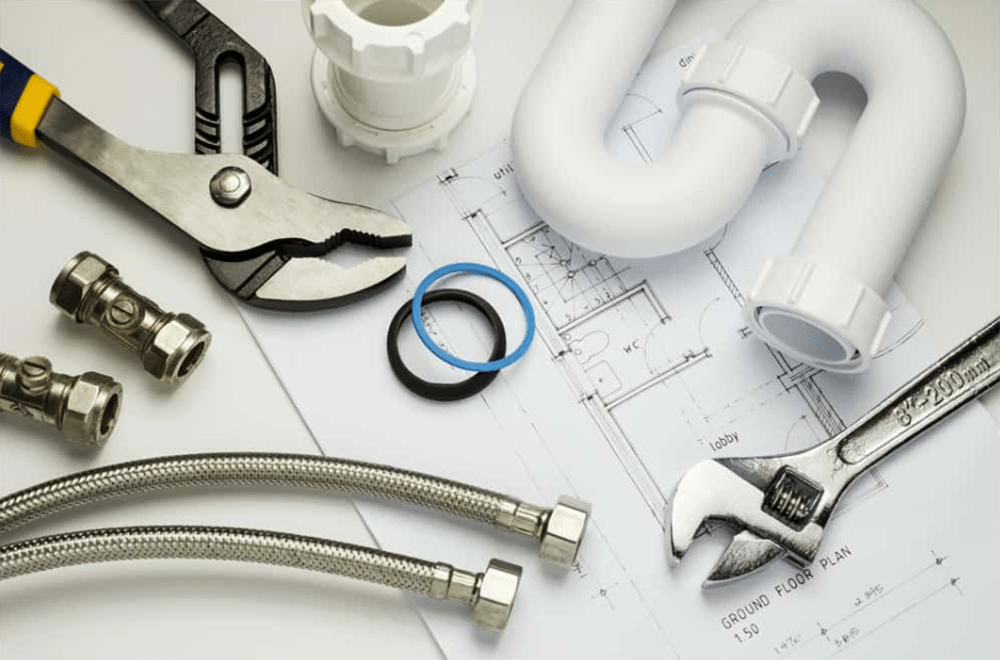If you’re planning a basement remodel, one of the most critical — and costly — components to consider is plumbing. Whether you’re installing a full bathroom, a wet bar, a laundry room, or an in-law suite, basement plumbing adds both convenience and value to your renovation — but it also requires planning, permits, and professional installation.
In this guide, we’ll break down:
- The types of plumbing projects typically included in basement remodels
- The average cost of each type of plumbing work
- Key factors that affect plumbing prices
- Tips to save money without cutting corners
Let’s dig into what it really costs to plumb a basement the right way in 2025.
Common Basement Plumbing Projects
Depending on your remodel goals, your plumbing needs might range from minimal to extensive. Here are the most common types of plumbing work in basement remodels:

| Plumbing Project | Description |
|---|---|
| Full Bathroom Installation | Toilet, sink, shower/tub — may require drain and vent lines |
| Half Bathroom Installation | Toilet and sink only |
| Wet Bar / Kitchenette | Sink, dishwasher hookup, basic drain line |
| Laundry Room | Washer hookup, drain, utility sink |
| Sump Pump / Ejector Pump | Handles drainage and waste below main sewer line |
| Water Heater or Softener | Optional, depending on setup |
Read More: How Much Does a Basement Egress Window Really Cost? (2025 Guide)
Basement Plumbing Cost Breakdown (2025 Estimates)
| Project Type | Average Cost |
|---|---|
| Rough-in Plumbing (per fixture) | $1,200–$2,500 |
| Full Bathroom Installation | $8,000–$15,000+ |
| Half Bathroom Installation | $5,000–$9,000 |
| Wet Bar/Kitchenette Plumbing | $2,500–$5,000 |
| Laundry Hookup | $1,500–$3,500 |
| Ejector Pump Installation | $2,000–$4,000 |
| Sump Pump Installation | $1,000–$3,000 |
| Permits and Inspections | $500–$1,500 |
Rough-in plumbing refers to installing the basic lines before walls and floors are finished. It’s often the most expensive and labor-intensive part of basement plumbing.
Read More: Adding an Egress Window in Our Basement: Cost, Code, and Home Value Benefits
Key Cost Factors in Basement Plumbing
1. Drainage and Sewer Access
Basements sit below the main sewer line in many homes, which means waste can’t always flow out naturally. If gravity doesn’t help, you’ll need an ejector pump, which adds $2,000–$4,000 to the cost.
Read More: Cost vs. Value Project: Basement Remodel (2025 Edition)
2. Concrete Cutting
Running new drain lines often requires cutting through the slab, which is labor-intensive and messy. Concrete breaking and patching may cost $500 to $2,000 or more depending on access and layout.
Read More: Exploring the Cost of Basement Waterproofing: What Homeowners Need to Know in 2025
3. Fixture Quality
A basic toilet, sink, or shower setup might cost $2,000 for materials and installation, while high-end fixtures can push the total well beyond $10,000.
Read More: How Much Does Basement Waterproofing Really Cost? (2025 Guide)
4. Permitting
Most cities require permits for plumbing work — especially when adding bathrooms. Fees range from $300 to $1,500, and failing to get proper permits could prevent future resale.
Read More: How Much Does Basement Waterproofing Cost? (2025 Guide)
5. Local Labor Rates
Plumbers in high-cost metro areas (e.g., New York, San Francisco) charge more than rural or mid-market cities. Rates vary from $75–$150 per hour.
Read More: How Much Does Basement Waterproofing Cost? [2025 Data & Guide]
Example Basement Remodel Plumbing Costs by Layout
Full Basement Bathroom Addition
Includes: Toilet, vanity, tub/shower combo, rough-in, finish, permit
Cost Range: $8,000–$15,000+
With Ejector Pump: +$3,000
Read More: Cost to Replace Basement Concrete Block Wall (2025 Guide)
Laundry Room with Utility Sink
Includes: Washer hookup, utility sink, drain line
Cost Range: $1,500–$3,500
Read More: Costs of Common Foundation Repairs in Basements: A Homeowner’s Guide
Wet Bar or Kitchenette
Includes: Sink, water line, drain line, possible dishwasher
Cost Range: $2,500–$5,000
Pro Tip: Planning your layout near existing plumbing (like under a kitchen or bathroom) can reduce material and labor costs significantly.
Read More: Basement Remodeling Pricing Guide: What You Need to Know in 2025
Plumbing Materials: What You’re Paying For
Understanding what goes into plumbing costs helps you plan your budget realistically:
| Cost Component | % of Total Cost |
|---|---|
| Labor & Installation | 50–65% |
| Fixtures & Materials | 20–30% |
| Permits & Inspections | 5–10% |
| Demolition / Concrete | 10–15% |
Common materials used include:
- PEX piping (modern, flexible, lower cost)
- PVC for drain lines
- Copper (more expensive, longer lifespan)
- Ejector pump systems for gravity-defying waste flow
Read More: Finished Basements in New Jersey: Transform Your Space with Expert Renovation
Tips to Reduce Plumbing Costs Without Sacrificing Quality

1. Keep Plumbing Close Together
Design your bathroom, laundry, or bar around a central location to limit piping runs and avoid slab cutting.
Read More: Michigan’s Trusted Basement Experts: Your Guide to Professional Basement Remodeling
2. Reuse Existing Rough-ins
If your builder pre-plumbed the basement for a bath or laundry, use it! You could save $2,000–$5,000 just by building around existing hookups.
3. Install Fixtures Later
Finish the rough-in now and delay high-end fixture installation to spread out costs.
Read More: Basement Finishing & Remodeling Company: Your Partner in Transforming Unused Spaces
4. Bundle Plumbing with HVAC/Electrical
Some contractors offer discounts when you bundle multiple services — especially during full basement remodels.
Read More: Basement Remodeling & Renovation Ideas: Transform Your Lower Level into a Functional Masterpiece
5. Hire a Licensed, Local Plumber
Avoid costly mistakes by using a licensed pro familiar with local building codes. An unpermitted DIY plumbing job could mean expensive repairs or fines later.
Read More: Basement Remodeling in Maryland: Maximize Your Living Space & Home Value
Is Basement Plumbing Worth It?
In most cases, yes — especially if you’re adding usable living space. A basement bathroom, for example, can boost your home’s value by 10–20% depending on the market. And if you’re creating a rental suite, the investment can pay for itself quickly through monthly income.
ROI Tip: A full bath adds more value than a wet bar or laundry room, but it’s also more expensive to build.
Read More: Basement Finishing & Remodeling in Bethesda, MD: Transform Your Home from the Ground Up
Final Thoughts
Plumbing is one of the most important investments in a basement remodel — and also one of the trickiest. With thoughtful planning, the right contractor, and a realistic budget, you can create a basement space that’s comfortable, convenient, and adds real value to your home.
